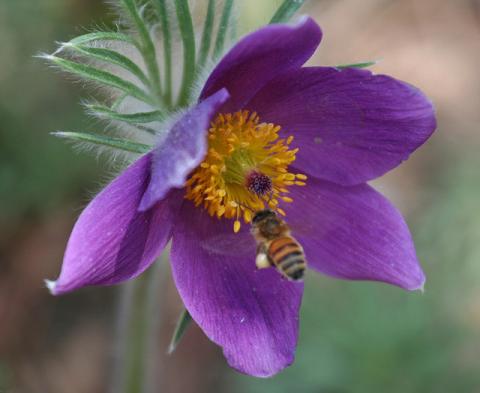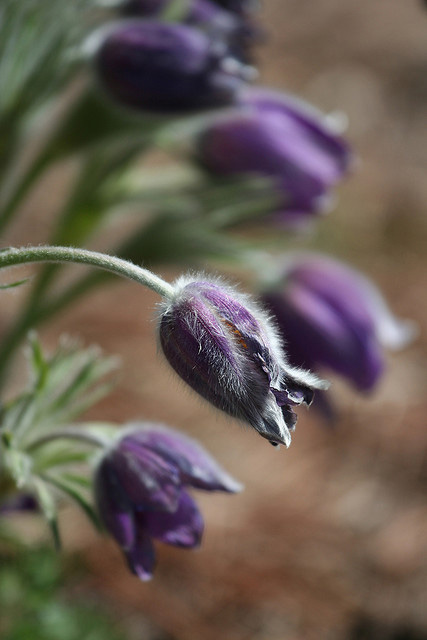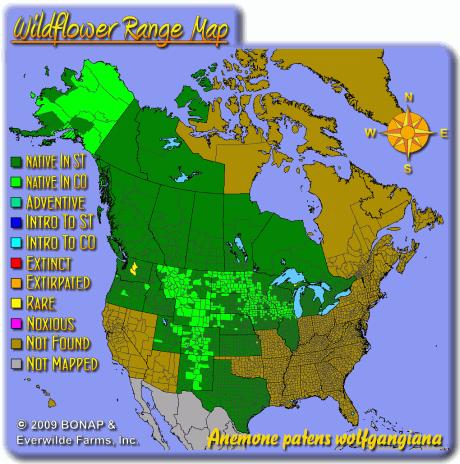 |
Canku Ota
|
 |
|
(Many Paths)
|
||
|
An Online Newsletter
Celebrating Native America
|
||
|
May 2016 - Volume 14
Number 5
|
||
|
|
||
|
Pasque Flower
(Pulsatilla hirsutissima) |
||
The Pasque flower, also known as the May Day flower (Pulsatilla)
is the state flower of South Dakota. The Pasque flower grows wild
throughout the state of South Dakota. The
Pasque flower is a solitary bell-shaped flower, lavender colored,
and plumed seed heads, belonging to the buttercup family.
Pasque flower is found distributed from the northwestern U.S. to
northern Alaska. Pasque FlowerTaxonomically, Pasque flower is placed in the genus
Anemone by some Taxonomists and some others in the genus Pulsatilla.
It is thus both the terms are used synonymously to refer the pasque
flower. Kingdom: Plantae The Pasque flower is called by many names like: Prairie
smoke; Goslinweed; Prairie crocus; and May flower. The pasque
plant bears a hairy peduncle above the whorled leaves with a single
large flower at its apex. This peduncle continues to elongated after
the flower sheds its petals. Each flower is approximately 3 inches
in open condition, consisting of 5-8 petal-like sepals, an elongated
cluster of white to purple styles, and a ring of numerous yellow
stamens. The petal color ranges from dark lavender to almost white.
There are no petals. The sepals of pasque flower are pale purple
to deep purple. The blooming period of pasque
flower is during early to mid-spring and lasts for 2 weeks.
The pasque flowers are short-lived and after shedding their sepals,
the styles of the flowers become plumose and elongated. At the base
of each mature style, there is a flattened achene.
Facts About Pasque Flower
|
||||
|
|
|
||
|
|
||
| Canku Ota is a free Newsletter celebrating Native America, its traditions and accomplishments . We do not provide subscriber or visitor names to anyone. Some articles presented in Canku Ota may contain copyright material. We have received appropriate permissions for republishing any articles. Material appearing here is distributed without profit or monetary gain to those who have expressed an interest. This is in accordance with Title 17 U.S.C. Section 107. | ||
|
Canku Ota is a copyright ©
2000 - 2016 of Vicki Williams Barry and Paul Barry.
|
||
 |
 |
|
|
The "Canku
Ota - A Newsletter Celebrating Native America" web site and
its design is the
|
||
|
Copyright ©
1999 - 2016 of Paul C. Barry.
|
||
|
All Rights Reserved.
|
||


